Avatar: The Last Airbender
Set in a fictional universe inspired by East Asian, South Asian, and Indigenous cultures, the show follows the journey of Aang, the last surviving Airbender, who is tasked with saving the world from the evil Fire Nation. Along the way, Aang and his friends Katara, Sokka, and later Toph and Zuko face countless challenges and battles, all while learning about themselves and each other.
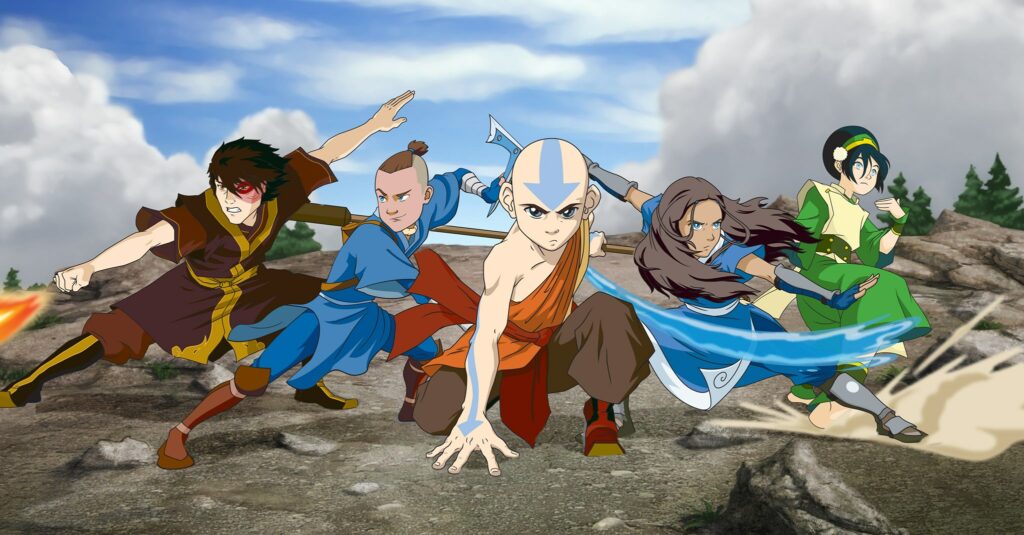
Journey into the World of Avatar: The Last Airbender
Original Animated Series
“Avatar: The Last Airbender” is a critically acclaimed Nickelodeon series that premiered in 2005. It follows Aang, the latest Avatar with the ability to control all four elements, on his quest to stop a worldwide conflict. The show’s storytelling, character development, and integration of Eastern philosophies and martial arts have made it a cultural phenomenon with a dedicated fanbase.
The Live-Action Series
Netflix’s live-action adaptation of “Avatar: The Last Airbender” has fans eagerly awaiting its release. The production aims to recreate the original series’ rich story and world-building in a new medium. The casting and creative direction have also generated buzz as viewers hope to see the essence of the animated original captured in the live-action version.
What is Avatar: The Last Airbender?
“Avatar: The Last Airbender” is set in a world where people can manipulate elements (water, earth, fire, air) through bending. The story follows Aang, the Avatar who can bend all four elements, on his quest to defeat the Fire Nation and restore balance. Key characters include Katara and Sokka of the Water Tribe, Toph from the Earth Kingdom, and Zuko from the Fire Nation. The world is divided into the Water Tribes, Earth Kingdom, Fire Nation, and Air Nomads, each with distinct cultures and bending abilities.
“Avatar: The Last Airbender” delves into profound themes such as the necessity of balance within the self and the world, the power of friendship and unity across diverse backgrounds, and the ongoing struggle between good and evil. These themes are woven through the characters’ journeys as they learn from each other and grow, highlighting the importance of understanding, compassion, and the courage to make difficult choices for the greater good. The series masterfully uses its fantasy setting to explore real-world issues, making its messages impactful and timeless.
Characters and Their Journeys
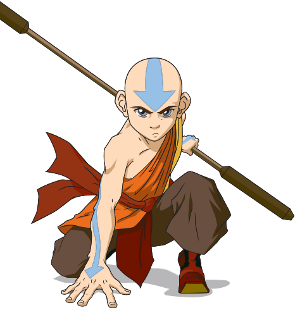
Aang
The last Airbender and Avatar, tasked with mastering all four elements to bring balance to the world. Aang’s journey from reluctant hero to a mature leader is central to the series.
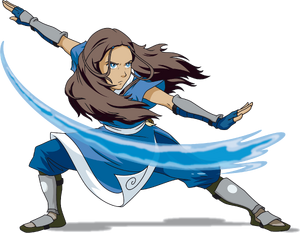
Katara
A Waterbender from the Southern Water Tribe, whose nurturing presence and strong sense of justice drive her to fight for her beliefs and help Aang in his quest.
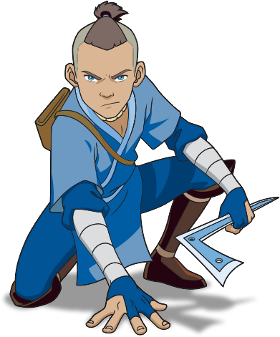
Sokka
Katara’s non-bending brother, known for his wit and ingenuity. His strategic mind and leadership qualities evolve proving invaluable to the team.
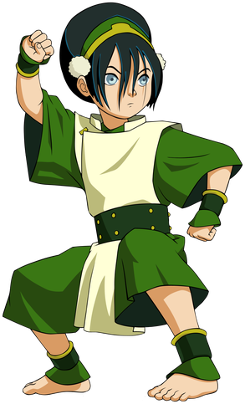
Toph
A blind Earthbender who introduces Aang to Earthbending. Her tough exterior masks a deep loyalty and courage, breaking stereotypes about disability.
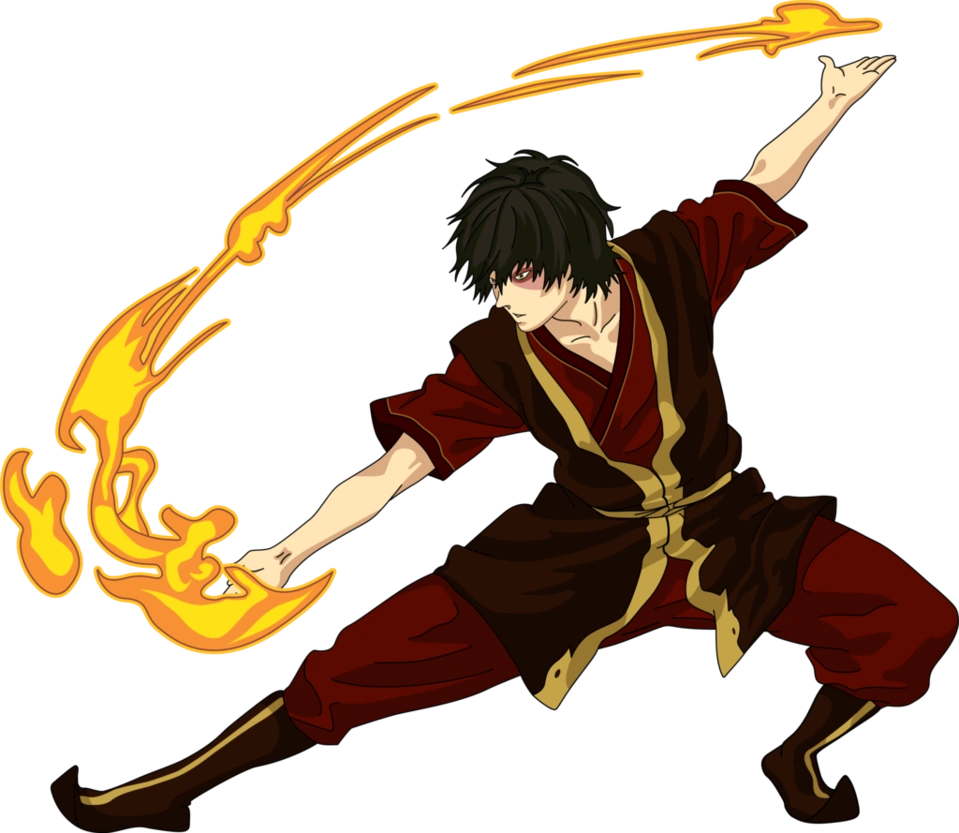
Zuko
Initially an antagonist, the Fire Nation prince’s complex journey towards redemption and self-discovery highlights themes of honour, identity, and forgiveness.
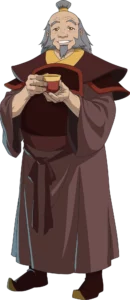
Iroh
Zuko’s wise and compassionate uncle, providing moral guidance not just to Zuko, but to other characters as well, embodying wisdom and understanding.
The World of Avatar
🗺️ Geography
The world of “Avatar: The Last Airbender” is divided into four distinct nations, each associated with an element: The Water Tribes, known for their adaptability and resilience; the Earth Kingdom, characterised by its vastness and strength; the Fire Nation, marked by its ambition and technological advancements; and the Air Nomads, recognised for their spirituality and freedom. Each nation has its unique culture, bending styles, and philosophy, reflecting the diversity and complexity of the series’ world.
🫂 Cultures
In “Avatar: The Last Airbender,” bending arts are central, with each of the four nations specialising in one element: water, earth, fire, and air. Special techniques include bloodbending, controlling another’s body through their blood, and metalbending, manipulating metal by detecting impurities. These advanced skills reflect the depth and evolution of bending abilities, showcasing the characters’ growth and the series’ exploration of the limits of power and control.
👻 Creatures & Spirits
The series introduces a variety of mythical creatures and spirits, each embodying elements of the natural world and spiritual beliefs of the Avatar universe. These beings range from the gentle and guiding spirits of the forests and waters to powerful entities like the Moon and Ocean Spirits, and the mischievous but insightful spirits encountered by characters during their journey. The interaction between humans and spirits plays a crucial role in the narrative, highlighting themes of balance, respect, and the interconnectedness of all life.
The Upcoming Live-Action Series
The live-action adaptation of “Avatar: The Last Airbender” by Netflix is set to premiere on February 22, 2024, featuring eight episodes, each an hour long. The cast includes Gordon Cormier as Aang, Kiawentiio as Katara, Ian Ousley as Sokka, and Dallas Liu as Zuko, among others. Albert Kim serves as the showrunner, with executive producers including Jabbar Raisani, Dan Lin, and Michael Goi. The series aims to faithfully recreate the animated show’s world, with high expectations set by its visuals and production quality.
The live-action adaptation of “Avatar: The Last Airbender” by Netflix aims to honor the original animated series while expanding upon it with rich visuals, detailed costuming, and a faithful recreation of the world and its characters. The production’s commitment to quality and depth suggests an effort to capture the essence of the original series, addressing previous criticisms and setting high expectations for storytelling and character development.
FAQs
What is bending?
Bending is the ability to manipulate an element (water, earth, fire, air), inherent to specific tribes or nations.
Who is the Avatar?
The Avatar is a unique individual who can bend all four elements, tasked with maintaining balance in the world.
Who are the four nations?
The four nations in Avatar: The Last Airbender are the Water Tribe, Earth Kingdom, Fire Nation, and Air Nomads, each corresponding to the classical elements of water, earth, fire, and air, respectively.
Will the live-action series follow the animated series closely?
Yes, it aims to faithfully recreate the animated series’ storyline while possibly exploring additional depth.
How does the live-action address the original series’ cultural aspects?
It seeks to respectfully and accurately represent the cultural influences that inspired the original series.